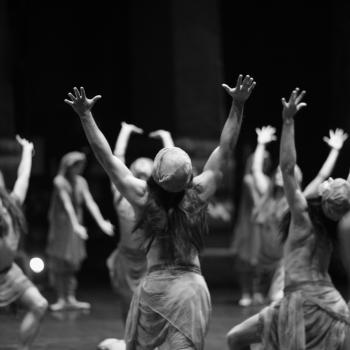Jonathan Morgan

This question fuels a persisting debate at the heart of the sociology of religion. Does modernization lead to secularization? Any answer to this question demands explanation. If modernization causes religiosity to fade, then why? If not, then how are we to understand the seemingly common trend of religious influence diminishing in the wake of modernization? Over the past decades the theory of secularization has fallen to the wayside, but two political scientists, Ronald Inglehart and Christian Welzel, are amassing a prodigious body of data that brings the debate back to life. With the World Values Survey, they suggest that religion fades not necessarily as a country develops economically, but as a country becomes more existentially secure.
 Of course, that concept needs clarification, but it’s worth reviewing where the secularization debate currently stands. Secularization refers to the movement of parts of society away from association with religious institutions or values. A prime example from Western Europe is the movement of schools from monastic and cathedral institutions in the 9th and 10thcenturies to the public universities we have today.
Of course, that concept needs clarification, but it’s worth reviewing where the secularization debate currently stands. Secularization refers to the movement of parts of society away from association with religious institutions or values. A prime example from Western Europe is the movement of schools from monastic and cathedral institutions in the 9th and 10thcenturies to the public universities we have today.
Many social thinkers have postulated that as a culture develops, secularization will occur across all parts of society. The sociologist Peter Berger was one of the most well-known advocates of this theory through the latter half of the 20th century. But evidence of growing religiosity across the world, particularly fundamentalist resurgences, led him to famously recant the secularization hypothesis as inadequate. Social theorists today are still trying to come to terms with the complex relationship between culture and religion.
This debate is especially pertinent for the relationship between religion and science. All too often the two are seen to be at odds. In fact, many theorists who support secularization theories point to science and the advance of rational thought as the undermining antagonist to religion. This is the classical Weberian argument that magical and metaphysical faith is dispelled by a new trust in science and technology. If Inglehart and Welzel are correct, then this assumption may need to be re-examined.
Other proponents of the secularization hypothesis follow the functionalist argument first put forward by Emile Durkheim. For functionalists, religion becomes irrelevant when the institution’s comprehensive role in education, health, and welfare is taken over by secular institutions. The only religious parts of New England Baptist Hospital, Beth Israel Deaconess Medical Center, and St. Elizabeth’s Medical Center are their names. These theorists contend that as a country develops, specialization and industrialization displace religious functions.
Sociologists Rodney Stark and Roger Finke challenge these traditional secularization theories by viewing the religious landscape of a culture as a marketplace. They assume that the demand for religion remains constant, so differences in religiosity must be a result of different policies regulating religious institutions. Pluralism and competition act like the free market and drive up religiosity. In particular, Finke and Stark point to the religiosity and pluralism of the US as a prime example supporting their theory.
In the book Sacred and Secular: Religion and Politics Worldwide, Inglehart and political scientist Pippa Norris argue that America’s religiosity doesn’t necessarily discount the secularization theory. Rather than follow Weber or Durkheim, they offer a new account of development based upon values and existential security. To support this new account, they draw upon over thirty years of data from 87 countries around the world. This data is all compiled through the World Values Survey (WVS), which gives an unprecedented view of how a culture’s ethos changes as it undergoes development. In particular, this research sheds light on each of the theories outlined above.
The marketplace theory proposed by Stark and Finke holds up the US as its prime example of how religious diversity and competition fuel religiosity. They are right to do so, since the US is among the most religious nations in the developed world. But the other two are Italy and Ireland, both of which have near religious monopolies by the Roman Catholic Church. The WVS has enough compiled data to graph the relationship between religious pluralism and religiosity (measured by regularity of attendance and private practice). The resulting scatter-plot looks like a Pollock painting: there’s no clear relationship.*
But discounting one theory doesn’t confirm the other. Inglehart and Norris have to explain why the US is so religious. But before we get to their existential security theory, it’s worth exploring the implications for the Weberian account of secularization.
This account is especially of interest to anyone who thinks rationality and science are at odds with religious belief. In some of their most compelling graphs, Inglehart and Norris show that the most secular nations are also the most skeptical about scientific progress. This skepticism was measured by questions like: “In the long run, do you think the scientific advances we are making will help or harm mankind?” A higher trust in scientific advance actually corresponds with higher rates of religious belief. Those nations most skeptical of scientific progress – the Netherlands, Norway, Belgium, Denmark – are also among the least religious.
Despite the intuitive appeal of the Weberian explanation, this surprising result makes sense. If rational thought was the true “dispeller” of religion, then it would be difficult to explain fluctuating levels of religiosity within a culture. Rational thought, once learned, doesn’t necessarily go away. But levels of religiosity can fluctuate rather dramatically within a couple of generations.
What fluctuates as dramatically as religiosity? Inglehart and Norris argue that existential security not only fluctuates as dramatically, but that it’s the actual driver of religious ebb and flow.
Existential security is a somewhat fuzzy term. They define it as “the feeling that survival is secure enough that it can be taken for granted.” So as a culture moves from agrarian to industrial to post-industrial, the feeling that everyone will survive into old age increases along with socio-economic development. Inglehart and Welzel argue that you can track existential security with a few basic measures such as per capita GNP, rates of AIDS/HIV, access to clean water, and number of doctors available. Over and over again, they demonstrate that these indicators serve as remarkably accurate predictors of how frequently people within a culture worship or pray.
What they are putting forward is a more nuanced, and complex, view of what changes during development. Instead of simply watching economic growth, they have developed a measure of multi-faceted ways a society changes. Existential security is related to socio-economic development, but development does not guarantee a feeling of security.
Take the US, for example. Inglehart and Norris argue that the high levels of religiosity in the US are driven by the high economic inequality in the US: the highest among highly developed nations They contend that this inequality heightens a sense of insecurity. The second highest level of inequality is Ireland (also the second most religious). The roughly linear relationship between economic inequality and frequency of prayer does not guarantee their theory. But it’s part of a larger opus that continually demonstrates an inverse relationship between existential security and religiosity.
Often this sort of research can come across as anti-religious. From a development and political perspective, religion can seem condemned to the status of annoyance or temporary illusion to be discarded. One striking element of Inglehart and Norris’ book is its lack of anti-religiosity. Instead, the secularization of nations is presented as a byproduct of a larger trend.
In fact, they point to the persistence and growth of spiritual concerns as religion declines in a culture. At the same time a society becomes more secular, more people also report thinking about the meaning of life more often. One could argue that this is precisely due to the decline of religion. But Inglehart and Norris see this trend as part of the emergence of post-materialist needs which arise in a post-industrial society. It would nicely account for the rise of New Age spirituality or the spiritual-but-not-religious contingency in the West.
Whether you accept their theory connecting existential security and religiosity or not, the World Values Survey offers an tremendous asset to anyone seeking to understand the relationship between development and religion. If Inglehart and Norris are correct, then theologians and sociologists alike are given a host of new questions about the nature of religion, culture, and existential security.
—
* Note: Depending on your platform, you may need to scroll slightly to reach the graph.











